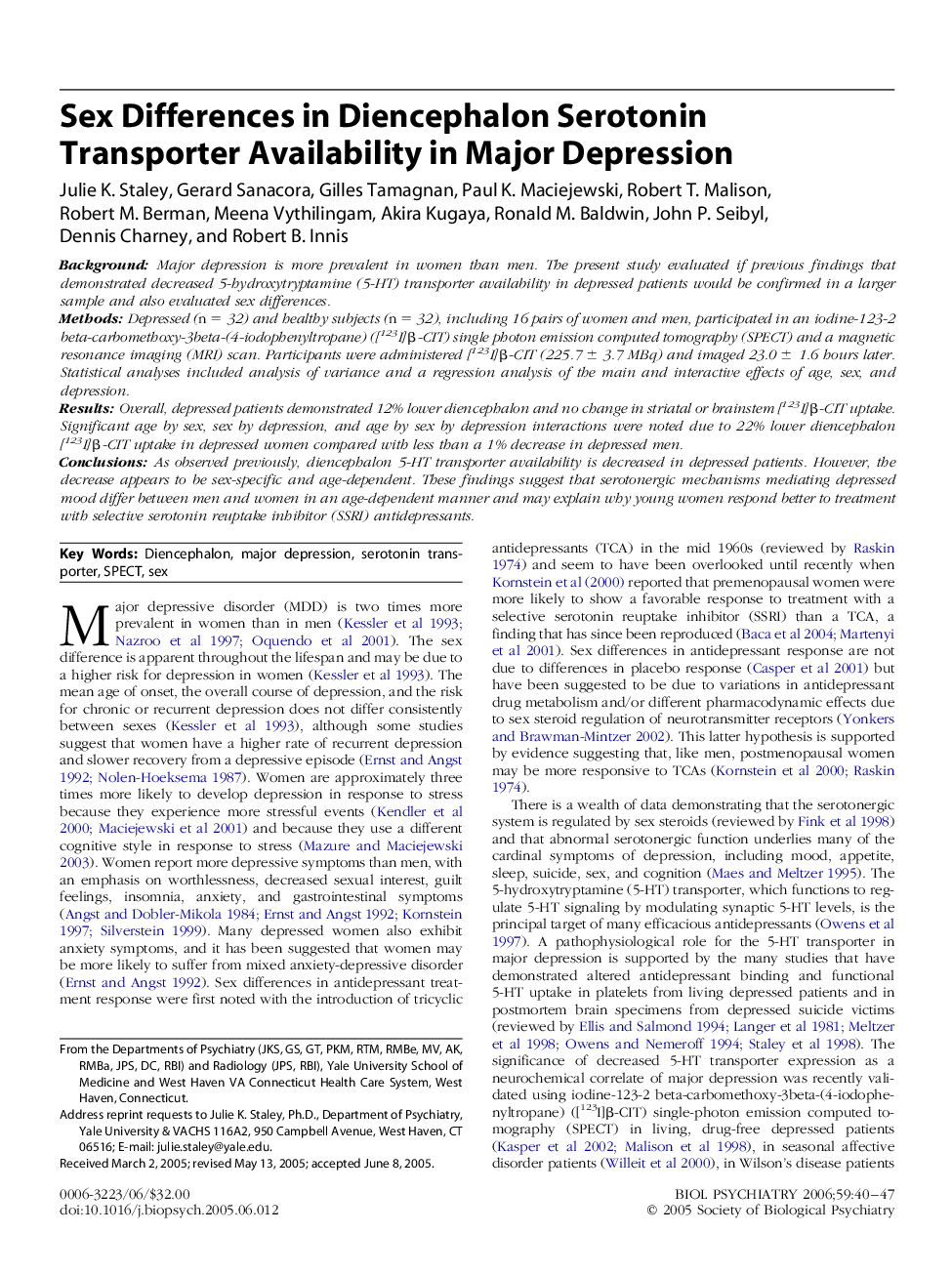| Article ID | Journal | Published Year | Pages | File Type |
|---|---|---|---|---|
| 4180908 | Biological Psychiatry | 2006 | 8 Pages |
BackgroundMajor depression is more prevalent in women than men. The present study evaluated if previous findings that demonstrated decreased 5-hydroxytryptamine (5-HT) transporter availability in depressed patients would be confirmed in a larger sample and also evaluated sex differences.MethodsDepressed (n = 32) and healthy subjects (n = 32), including 16 pairs of women and men, participated in an iodine-123-2 beta-carbomethoxy-3beta-(4-iodophenyltropane) ([123I]β-CIT) single photon emission computed tomography (SPECT) and a magnetic resonance imaging (MRI) scan. Participants were administered [123I]β-CIT (225.7 ± 3.7 MBq) and imaged 23.0 ± 1.6 hours later. Statistical analyses included analysis of variance and a regression analysis of the main and interactive effects of age, sex, and depression.ResultsOverall, depressed patients demonstrated 12% lower diencephalon and no change in striatal or brainstem [123I]β-CIT uptake. Significant age by sex, sex by depression, and age by sex by depression interactions were noted due to 22% lower diencephalon [123I]β-CIT uptake in depressed women compared with less than a 1% decrease in depressed men.ConclusionsAs observed previously, diencephalon 5-HT transporter availability is decreased in depressed patients. However, the decrease appears to be sex-specific and age-dependent. These findings suggest that serotonergic mechanisms mediating depressed mood differ between men and women in an age-dependent manner and may explain why young women respond better to treatment with selective serotonin reuptake inhibitor (SSRI) antidepressants.
